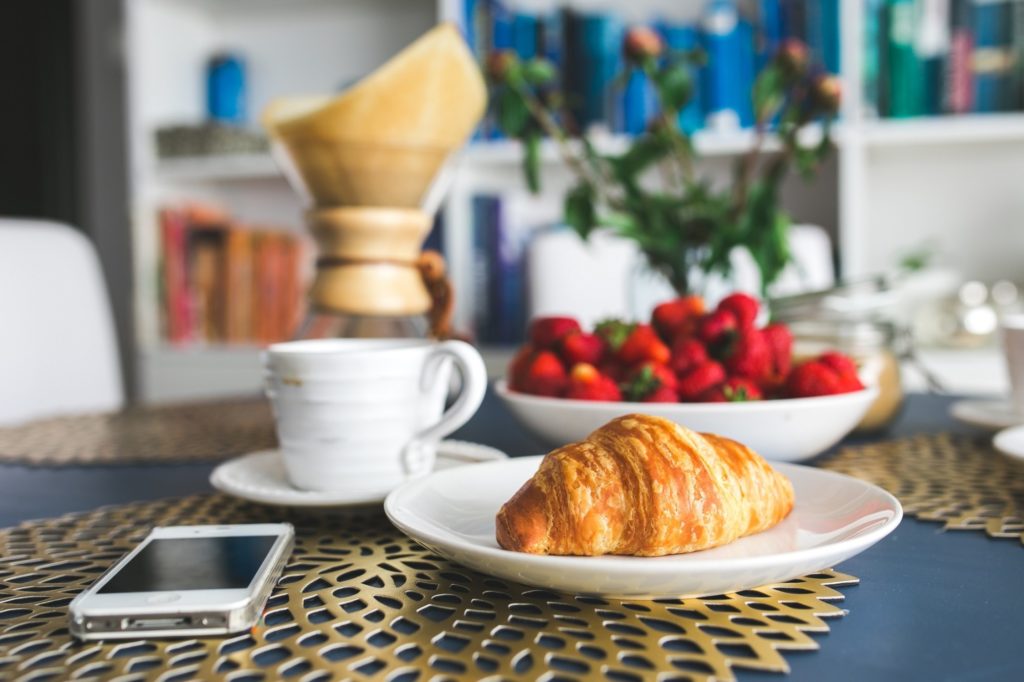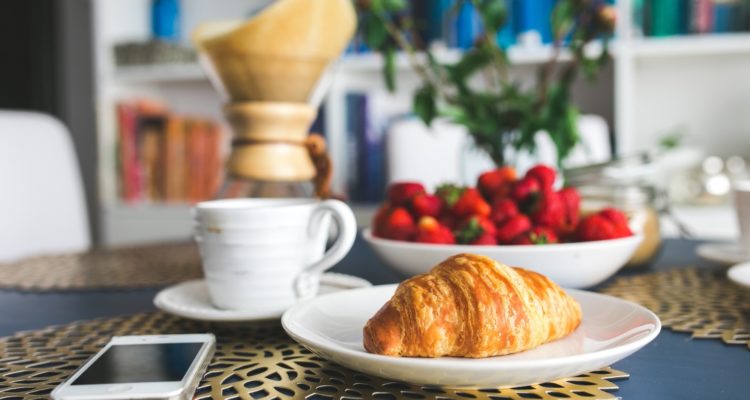
When it comes to baking pastries, it’s no secret that the French take the practice very seriously indeed.
The results show after all – there’s something so incredibly delicious about the buttery, flaky, and crunchy taste of French pastries.
The idea may seem daunting, but have you ever considered trying your hand at baking the goods yourself?
While baking French classical pastries takes its time, it’s really not too difficult. There’s no special equipment required, or difficult-to-find ingredients needed after all. What you do need is a good technique and patience!
We’re going to show you how to bake French croissants step by step, but you can alter the recipe and shapes to bake famous French pastries of your choice.
How to Make Classic Croissants
Ingredients
For the pastry:
1 lb. 2 oz. (4 cups) unbleached all-purpose flour
5 oz. (1/2cup plus 2 Tbs.) water
5 oz. (1/2 cup plus 2 Tbs.) whole milk
2 oz. (1/4 cup plus 2 Tbs.) granulated sugar
1-1/2 oz. (3 Tbs.) unsalted butter
1 Tbs. plus scant 1/2 tsp. instant yeast
2-1/4 tsp. table salt
For the butter layer:
10 oz. (1-1/4 cups) unsalted butter
For the egg wash
1 large egg
1. Making The Pastry
To make the French pastry, combine all the pastry ingredients in a bowl. Mix on low speed for three minutes before mixing on medium speed for a further three minutes.
Move the pastry to a lightly floured 10-inch pie pan or plate. Lightly dust the top of the pastry with flour and wrap thoroughly with clingfilm so it won’t dry out. Refrigerate overnight.
2. Making The Butter Layer
The following day cut the cold unsalted butter lengthwise into ½-inch-thick pieces.
Arrange the slabs on parchment or waxed paper to create a 5- to 6-inch square. Feel free to cut the butter crosswise for it to fit.
Top the butter with another piece of parchment or waxed paper. Then, using a rolling pin smooth out the butter with delicate, even strokes. As the slabs begin to join, use more force until the butter shapes as about a 7-1/2 inch square.
Trim the edges and place them on the top of the square. Then, pound them with the rolling pin. Place in the fridge while you roll out the classical pastry.
3. Laminating The Pastry
Take the pastry out of the fridge. Unwrap and lay on a lightly floured surface. Then, roll into a 10-1/2-inch square.
Take the butter out from the fridge – by now it should be supple and cold. Unwrap and transfer the butter onto the pastry so that the points of the butter square center along the edges of the pastry.
Gently fold a flap of pastry over the butter, extending it slightly so that the point reaches the center of the butter. Repeat with the rest of the flaps. Press the edges together to seal the butter to the pastry.
4. Rolling The Pastry
Flour the top and bottom of the pastry then press the pastry with a rolling pin. Start rolling to lengthen the pastry.
Roll the pastry until its approximate measurements are 8 by 24 inches. Take one short end of the pastry and fold it over, leaving one-third of the end of the pastry. Fold the uncovered pastry over the folded section and place on a baking sheet.
Cover with cling film and put in the freezer for 20 minutes for it to chill quickly.
Once it’s taken out of the freezer, repeat the rolling and folding process. However, this time, roll in the direction of the two open ends until the pastry measure 8 by 24 inches. Fold the pastry into thirds once more.
Then, cover with clingfilm again and freeze for another 20 minutes.
Repeat the process a third time and then refrigerate overnight.
5. Shaping The Croissants
To shape the croissants, remove the chilled pastry from the fridge and roll out into a rectangle. Cut the pastry in half crosswise and roll into another rectangle. Cut it into three squares, and then cut each square in half diagonally.
Roll each triangle to lengthen the point and then grab the other two points, stretching them slightly as you roll it up.
Place onto a baking sheet, curving ever so slightly. Let the croissants rise until they look puffy and light. In a bowl, beat the egg to create the egg wash, then glaze the croissants thoroughly with it.
6. Baking The Croissants
Heat the oven to 400°F convection, or 425°F conventional. Give the croissants another quick brush of the egg wash.
Then place the croissants into the oven for between 18 – 20 minutes or until the tops of the croissants are richly browned and the edges show signs of coloring. If they tend to darken too quickly, reduce the oven temperature by 10°F.
Leave the croissants to cool.
The croissants are best served slightly warm. However, don’t worry about eating them right away as they can be reheated easily. Simply pop them in a 350°F oven for roughly 10 minutes.
They can also be wrapped in clingfilm or aluminum foil and frozen for a month or even longer so you can sample them long after they’ve been baked!
Ready to Make French Pastries?
As mentioned, this recipe is to create crumbly, flaky French croissants but you can alter it to create other delicious French pastries.
For example, to make scrumptious chocolate croissants or pain au chocolats, chop some high-quality bittersweet chocolate and place along the length of the end of the pastry triangle after it’s been stretched.
Roll it just like a usual croissant and proof and bake as usual.
Looking for more baking tips? Learn how to bake a layer cake like a pro!

